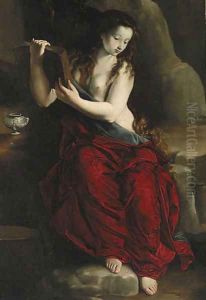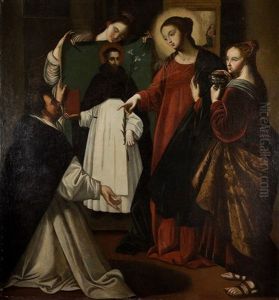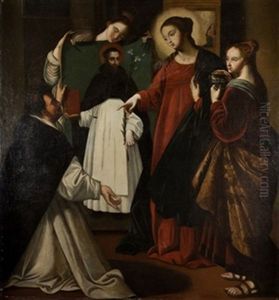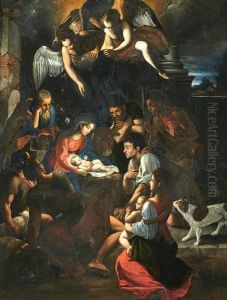Juan Bautista Maino Paintings
Juan Bautista Maino, also known as Juan Bautista Maíno, was a Spanish painter born in 1581 in Pastrana, a town in the province of Guadalajara, Spain. He is often associated with the early Baroque period and was known for his detailed and expressive religious compositions, as well as his adept use of chiaroscuro and his skillful depiction of light.
Maino's early life is not well-documented, but it is believed that he was of Italian descent, which may have influenced his artistic development. He is thought to have trained with the painter El Greco, who was active in Toledo, Spain, during Maino's formative years. This connection to El Greco is often cited as a significant influence on Maino's stylistic evolution.
Maino is known to have traveled to Italy, where he spent several years. This period was crucial for his exposure to the work of Italian masters and the contemporary Baroque style that was emerging during the late 16th and early 17th centuries. The influence of Italian art, particularly the work of Caravaggio, is evident in Maino's use of dramatic lighting and realistic, emotionally charged figures.
After returning to Spain, Maino established himself in Madrid and gained the patronage of the Spanish court. He worked on several significant commissions, including altarpieces and religious works for convents and churches. One of his most famous works is 'The Adoration of the Shepherds' in the Museo del Prado, Madrid, which showcases his mastery of light and his ability to convey the human aspect of religious scenes.
Juan Bautista Maino’s contribution to Spanish art is significant in the context of the transition between the Mannerist and Baroque periods. He was a contemporary of other Spanish masters like Velázquez and Alonso Cano, participating in the artistic developments of the time.
Maino passed away in 1649 in Madrid. Despite being less well-known than some of his contemporaries, his work is recognized for its quality and his role in bringing the early Baroque style to Spain. His paintings can be found in various collections, primarily in Spain, including the Museo del Prado, where some of his most important works are preserved.



